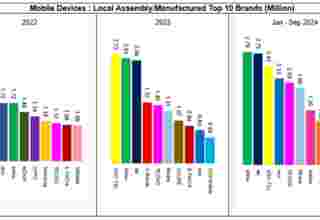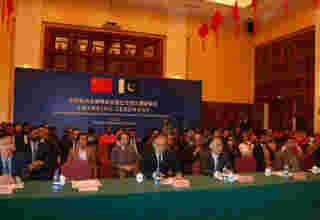ISLAMABAD, Nov 03 (INP-WealthPK): The current account of Pakistan posted a deficit of $2.2 billion in the first quarter of the current fiscal against $3.5 billion recorded in the corresponding period of the previous financial year mainly owing to an increase in exports and a decrease in imports, WealthPK reports.
According to the monthly outlook for October 2022, released by the Ministry of Finance, the current account deficit shrank to $316 million in September 2022 against $676 million in August 2022, reflecting an improvement in the trade balance.
Pakistan’s exports grew by 5.5% during the first quarter of the current fiscal and reached $7.6 billion against $7.2 billion in the same period of last year while its imports declined by 7.9% and dipped to $16.0 billion as compared to $17.4 billion in the previous year. “Resultantly the trade deficit reached $8.4 billion against $10.2 billion in the last year,” said the report.
During the first quarter of the current financial year, exports from the country increased by 2.6% and reached $7.2 billion against $6.9 billion in the last year. On a year-on-year basis, Pakistan’s exports increased by 1.5% and reached $2.44 billion in September 2022 as compared to $2.40 billion in September 2021.
The report said that the major export commodities, which showed growth during the first quarter of the current fiscal, included readymade garments, cotton cloth, knitwear, carpet, rugs and mats, footwear and footballs. The imports decreased to $16.4 billion as compared to $18.7 billion last year, showing a reduction of 12.4%. The main import commodities included petroleum products, medicinal products, crude petroleum, liquefied natural gas, palm oil, plastic materials and iron and steel.
The Foreign Direct Investment (FDI) in Pakistan dipped to $253.4 million during the first quarter of the current fiscal as compared to $479.2 million in the corresponding period of the previous year, showing a decrease of 47.1%.
On a month-on-month basis, FDI was recorded at $83.9 million in September 2022 against $110.7 million in August 2022. The FDI received from UAE was $59.7 million, from China $57.2 million, Switzerland $34.9 million, and the Netherland $23.2 million.
The power sector attracted the highest FDI of $126.5 million, followed by financial business with $74.4 million, and oil and gas exploration with $6.0 million. The Foreign Private Portfolio Investment registered a net outflow of $12.1 million while Foreign Public Portfolio Investment recorded a net outflow of $18.2 million. The total foreign portfolio investment recorded an outflow of $30.3 million during the first quarter of the current fiscal against $961.6 million in the previous year.
The report said that the total foreign investment from July to September reached $223.1 million against $1,358.5 million in the same period of the previous year. Workers’ remittances were recorded at $7.7 billion against $8.2 billion in the previous year, showing a decrease of 6.3%. On a month-on-month basis, remittances decreased by 10.5% in September 2022 and dipped to $2.4 billion as compared to $2.7 billion in August 2022.
Pakistan’s total liquid foreign exchange reserves increased to $14.6 billion on October 26, 2022. The reserves of the State Bank of Pakistan now stand at $8.9 billion and that of commercial banks at $5.7 billion.
The report said that the KSE-100 index closed at 41,129 points on September 30, 2022, while market capitalisation managed at Rs6,782 billion.
It said that the economic environment in Pakistan was challenging due to the damage caused by recent floods. The agriculture sector has been particularly hard hit by the floods and its impact will also be transferred to other sectors of the economy, changing the overall economic outlook.
The exchange rate in terms of the Pakistani rupee to the US dollar has started appreciating. In October, the local average prices of basic goods declined as compared to September which is likely to reduce inflation. However, disruption in supply after the recent floods resulted in a shortage of perishable food items, posing risks of higher inflation.
The inflationary risks have partially been alleviated due to timely decisions to import perishable items by waiving the customs duties. Administrative measures are also being taken to control price speculation to control inflation. The government’s action against private banks involved in artificially jacking up dollars assisted in strengthening the rupee against the dollar.
Moreover, the declining international commodity prices are expected to offset the inflation spikes that emerged due to domestic supply shocks. Nevertheless, it can be expected that inflation in October will maintain its declining tendency observed in September.
Regarding the agriculture sector, the report said that for Rabi crops availability of certified seeds would be 14% more as compared to last year. According to the Indus River System Authority, provinces have been allocated 30.25 MAF of water as compared to the actual use of 27.42 MAF.
The prevailing weather conditions are supportive and the shortage with average system usage seems manageable. However, the flood water in cropping areas poses some risks to wheat production despite government efforts to facilitate the farmers, according to the report available with WealthPK.

























